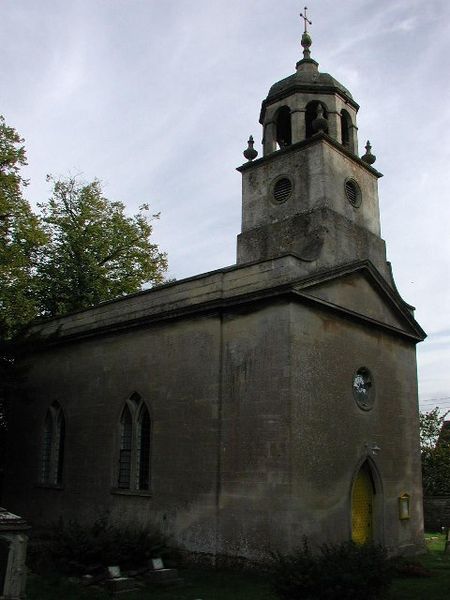All Saints Church, Woolley

All Saints Church at Woolley in the parish of Charlcombe, Somerset, England, dates from 1761 and was built by John Wood, the Younger replacing an earlier church on the site. It is a Grade I listed building.The church has a nave and apsidal sanctuary topped by a small bell tower with an octagonal cupola. The pews were brought in from another church in Bath to replace the original box pews in 1903.Within the church is a plaque giving thanks for the safe return of all 13 men from the village who fought in World War I and 15 in World War II, making it one of the Thankful villages.From the 1970s to 1990s the church underwent significant restoration funded by local residents and the Friends of Wooley Church.The parish is part of the benefice of Bath St Saviour with Swainswick and Woolley, within the deanery of Bath.
Excerpt from the Wikipedia article All Saints Church, Woolley (License: CC BY-SA 3.0, Authors, Images).All Saints Church, Woolley
Church Street,
Geographical coordinates (GPS) Address Nearby Places Show on map
Geographical coordinates (GPS)
| Latitude | Longitude |
|---|---|
| N 51.415277777778 ° | E -2.3613888888889 ° |
Address
Church Street
BA1 8AS , Charlcombe
England, United Kingdom
Open on Google Maps








